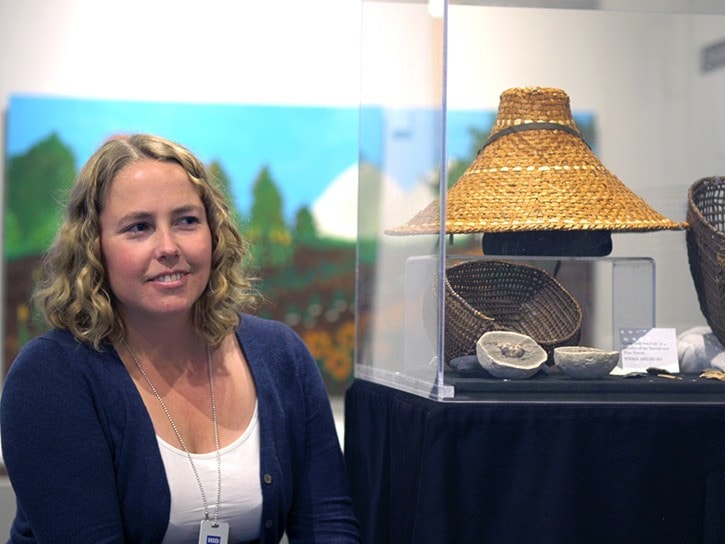It's a small space, but the White Rock Museum is still managing to transport visitors to where our food comes from – with the help of sound recordings.
The fact a train disrupts one of the farm-sound recordings only makes it more authentic for a White Rock audience.
"The place where this was recorded was supposed to be capturing birds, but it also was near a train," curator Kate Petrusa told Peace Arch News Tuesday. "I figured it worked out, with the train being so close here."
The Marine Drive museum's latest exhibition, Soil and Sea: A Story of Local Food, explores the history of food production on the Semiahmoo Peninsula. It documents the history of contemporary farms in South Surrey and the market garden community in White Rock. It also features stories of traditional food gathering and fishing of Semiahmoo First Nation, and explores the history of commercial oyster, crab and salmon fishing in local waters.
"A lot of people are interested in local food," said Petrusa. "This honours people who make their living growing, creating, catching the food that we all eat."
Among the stories featured in the exhibition is one of a South Surrey farm, whose original 1940s barns still stand, but are used for a much different farming operation. What began as a flax processing plant became a cattle feedlot with over 1,500 cows. The operation lasted 40 years before changes in the supply chain made local cattle farming too challenging.
Now the farm produces compost.
Stories of the sea include an explanation of an old fishing technique called reef net fishing. Developed by the Straits Salish people at a time when stocks were more plentiful, the technique employs a large net hung between two canoes. The net is raised when it's full of fish.
"Reef net fishing is a very unique kind of fishing to this area," said Petrusa. "It's like a giant scoop – you'd just scoop and you'd have thousands of fish."
The technique is illustrated by a three-dimensional model created by Don Welsh.
The exhibition is bolstered by photographs from personal collections never displayed before, and also includes two showcases – one with artifacts related to fishing, the other with items from local farming history.
Among the items on display: an original Crescent Oyster Company storage tin, used to ship Mud Bay oysters; and a cow's tooth from the museum's collection.
Interactive activities are also part of Soil and Sea. Children can try planting felt veggies, complete a matching game or plant a seed in a pot to take home.
Soil and Sea runs until Oct. 10 at the museum, 14970 Marine Dr. Admission is by donation. The museum is open every day from 10:30 a.m. to 4:30 p.m., with exhibition tours available through the summer on Saturdays and Sundays from 1 to 4 p.m.
